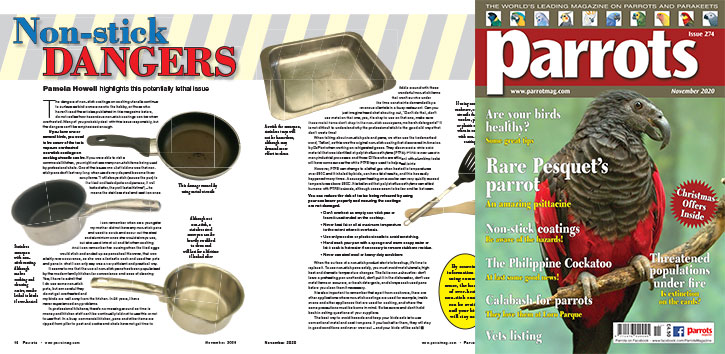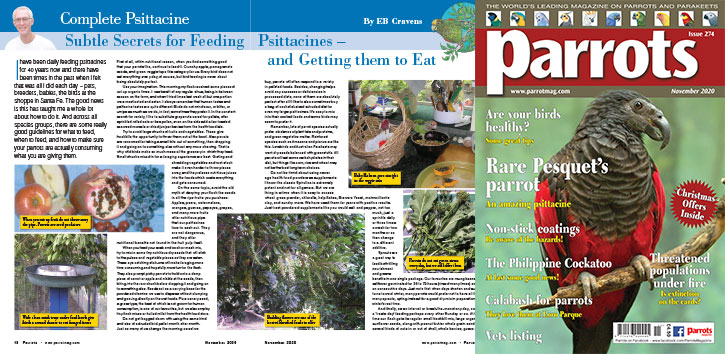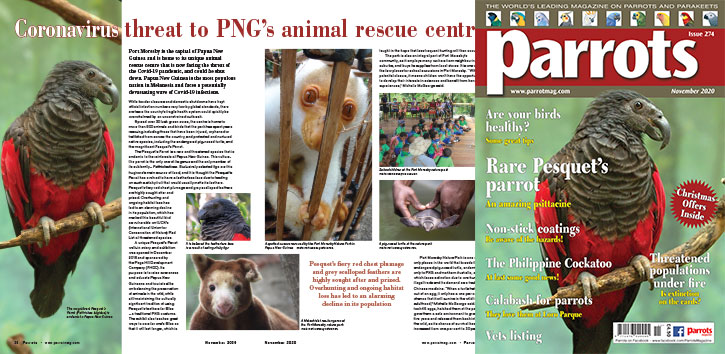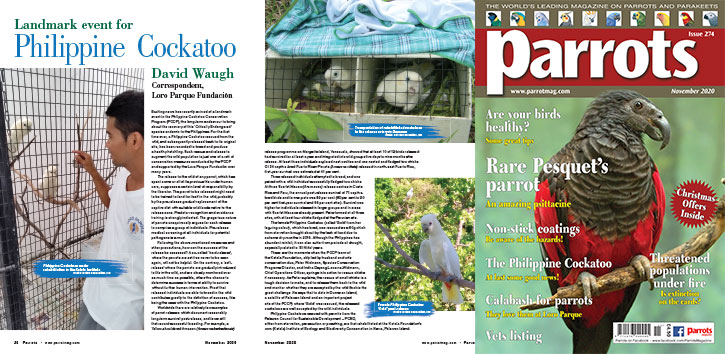
Pamela Howell highlights this potentially lethal issue
The dangers of non-stick coatings on cooking utensils continue to surface as bird owners new to the hobby, or those who haven’t read the articles published in this magazine before, do not realise how hazardous non-stick coatings can be when overheated. Many of you probably deal with this issue responsibly, but the dangers can’t be emphasised enough.
If you have one or several birds, you need to be aware of the toxic vapours overheated non-stick coatings on cooking utensils can be. If you were able to visit a commercial kitchen, you might not see many non-stick items being used by professional chefs. One of the issues one chef told me was that non-stick pans don’t last very long when used every day and become throw away items. “I will always stick (excuse the pun) to the tried and tested pots and pans as, if well looked after, they will last a lifetime”, – he means the stainless steel and cast iron ones.
Buy Now!

Complete Psittacine by Eb Cravens
I have been daily feeding psittacines for 40 years now and there have been times in the past when I felt that was all I did each day – pets, breeders, babies, the birds at the shoppe in Santa Fe. The good news is this has taught me a whole lot about how to do it. And across all species groups, there are some really good guidelines for what to feed, when to feed, and how to make sure your parrots are actually consuming what you are giving them.
First of all, within nutritional reason, when you find something good that your parrots like, continue to feed it. Crunchy apple, pomegranate seeds, and green veggie tops this category for us. Every bird does not eat everything every day, of course, but bird feeding is never about being absolutely perfect.
Use your imagination. This morning my flock received some pieces of cut up organic limes. I was bereft of any regular citrus, being in between season on the farm, and when I tried limes last week all but one portion were masticated and eaten. I always remember that human tastes and psittacine tastes are quite different. Birds do not mind sour, or bitter, or unripe as much as we do, in fact, sometimes they prefer it. In the constant search for variety, I like to substitute grapenuts cereal for pellets, offer sprinkled rolled oats or bee pollen, even on the side add a few toasted seaweed morsels or dried juniper berries from the health food isle.
Buy Now!

Port Moresby is the capital of Papua New Guinea and is home to its unique animal rescue centre that is now facing the threat of the Covid-19 pandemic, and could be shut down. Papua New Guinea is the most populous nation in Melanesia and faces a potentially devastating wave of Covid-19 infections.
While border closures and domestic shutdowns have kept official infection numbers very low by global standards, there are fears the country’s fragile health system could quickly be overwhelmed by an unconstrained outbreak.
Spread over 30 lush green acres, the centre is home to more than 500 animals and birds that the park has spent years rescuing including those that have been injured, orphaned or trafficked from across the country, and protected and nurtured native species, including the endangered pig-nosed turtle, and the magnificent Pesquet’s Parrot.
The Pesquet’s Parrot is a rare and threatened species that is endemic to the rainforests of Papua New Guinea. This vulture-like parrot is the only one of its genus and the only member of its subfamily – Psittrichadinae. Exclusively selected figs are this frugivore’s main source of food, and it is thought the Pesquet’s Parrot has evolved to have a featherless face due to feeding on such a sticky fruit that would usually matte its feathers. Pesquet’s fiery red chest plumage and grey scalloped feathers are highly sought after and prized. Overhunting and ongoing habitat loss has led to an alarming decline in its population, which has marked this beautiful bird as vulnerable on IUCN’s (International Union for Conservation of Nature) Red List of threatened species.
Buy Now!

David Waugh, Correspondent, Loro Parque Fundación
Exciting news has recently arrived of a landmark event in the Philippine Cockatoo Conservation Program (PCCP), the long-term endeavour to bring about the recovery of this ‘Critically Endangered’ species endemic to the Philippines. For the first time ever, a Philippine Cockatoo rescued from the wild, and subsequently released back to its original site, has been recorded to breed and produce a healthy hatchling. Such rescue and release to augment the wild population is just one of a raft of conservation measures conducted by the PCCP and supported by the Loro Parque Fundación over many years.
The release to the wild of any parrot, which has spent some or all of its previous life under human care, supposes a certain level of responsibility by the liberator. The parrot to be released might need to be trained to fend for itself in the wild, probably by the pre-release gradual replacement of the captive diet with suitable wild foods native to the release zone. Predator recognition and avoidance training is strongly indicated. The gregarious nature of parrots unequivocally argues for each release to comprise a group of individuals. Pre-release medical screening of all individuals for potential pathogens is a must.
Buy Now!




